"Some fresh and inspiring sequencing ideas, paired with an underwhelming sound engine": AlphaTheta Chordcat first look
AlphaTheta returns to the studio for a chord-focused sequencer and groovebox. We've had a preview, and have mixed feelings...
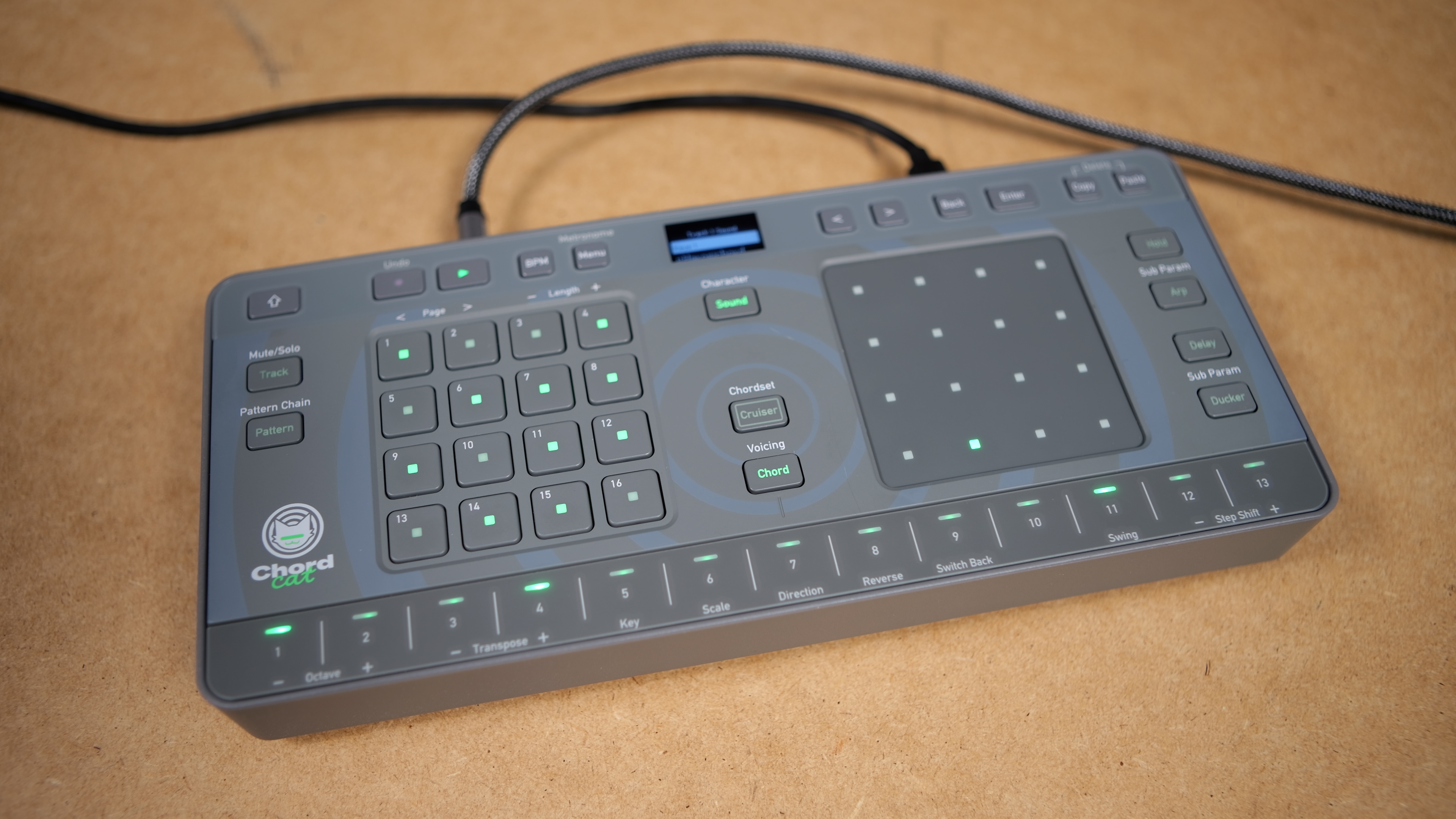
It’s been a while since we’ve seen any new music production gear released from AlphaTheta, the brand previously known as Pioneer DJ. Back before rebranding, the company released a short run of studio tools under its Toraiz brand name, which it used as an offshoot of its all-conquering DJ product line in order to focus on studio and production tools.
Previous Toriaz releases have included the SP-16, an MPC-influenced sampler equipped with Dave Smith-designed filters, the under-rated AS-1 analogue monosynth and Squid hardware sequencer. Now, six years on from the release of Squid, AlphaTheta has a new music production tool – Chordcat.
Chordcat is a compact, budget-friendly groovebox that puts chord sequencing at the centre of its workflow. It has eight individual tracks each of which can sequence sounds selected from 145 sample-based instruments and 16 drum kits.
Each track has its own polyphonic sequencer with a maximum of 128 steps. These allow for patterns to be input and edited step-by-step or via live recording. Chordcat also allows for basic parameter recording using its XY pad.
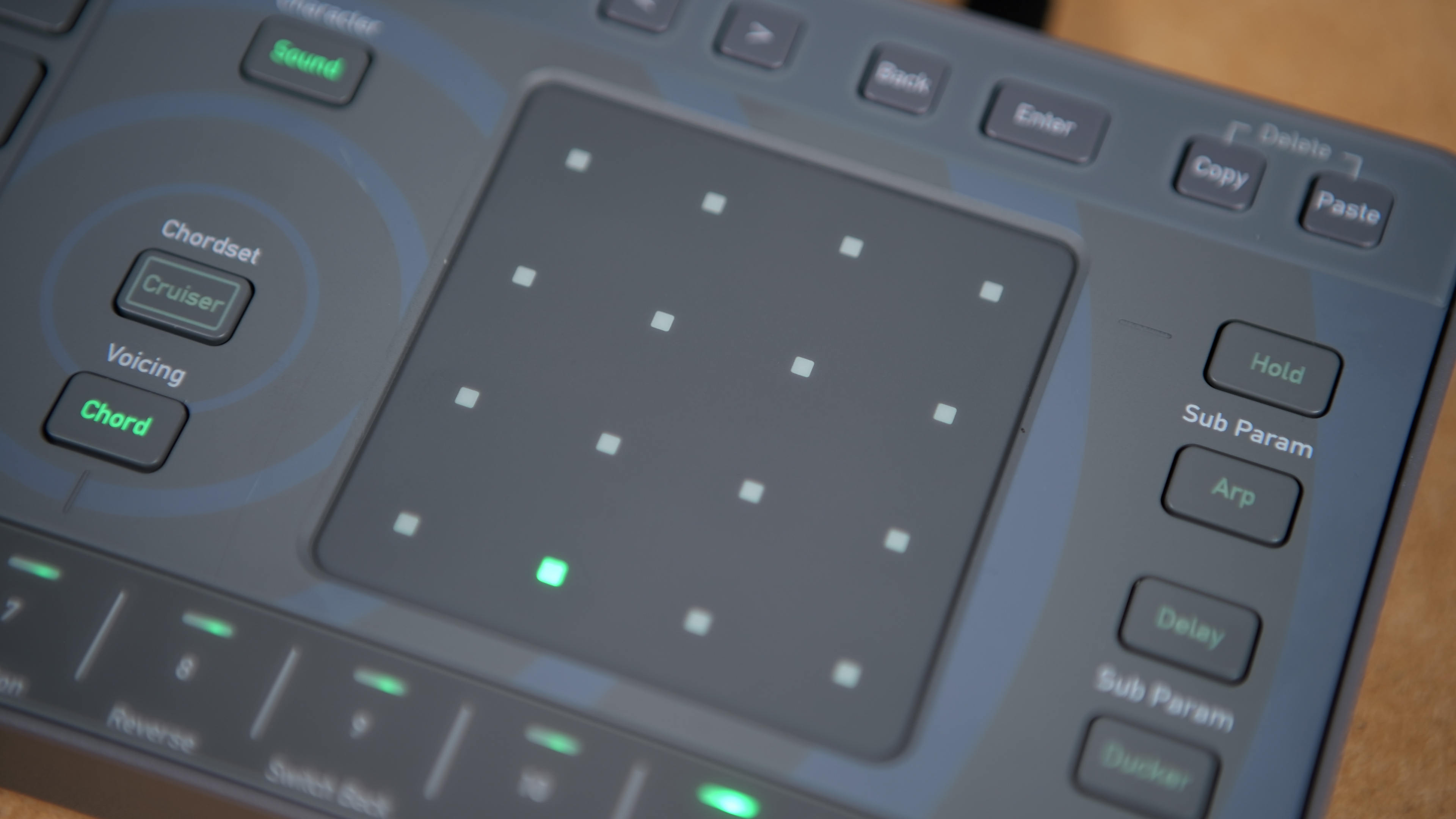
Its most notable features, however, are those that focus on chord sequencing. Chordcat features a scale mode, chord function and pre-made chord sets for quickly creating progressions. It also has an innovative Chord Cruiser feature, designed to automatically suggest chord combinations in order to inspire new compositional ideas – particularly handy for those lacking in musical know-how.
I’ve spent some time with Chordcat ahead of its release, although there are a few key features I’ve yet to try. Ahead of a full review, what follows are a few first impressions of AlphaTheta’s latest music making tool.
The hardware
In person, Chordcat is smaller than it looks on screen and is significantly more lightweight and budget-feeling than previous Toraiz releases.
Want all the hottest music and gear news, reviews, deals, features and more, direct to your inbox? Sign up here.
There are good and bad aspects to this. At the positive end, Chordcat is an incredibly convenient feeling piece of hardware – it’s only a touch over pocket sized and very light, meaning that it’s definitely something that can easily be thrown into a backpack and used on the go.
It can be powered by either AA batteries or USB-C, which adds to the portability. Some might bemoan the lack of a built-in speaker, but personally that’s not something I miss – speakers on instruments at this price point tend to be weak and disappointing anyway, and rarely offer an experience that can match connecting to external speakers or headphones.
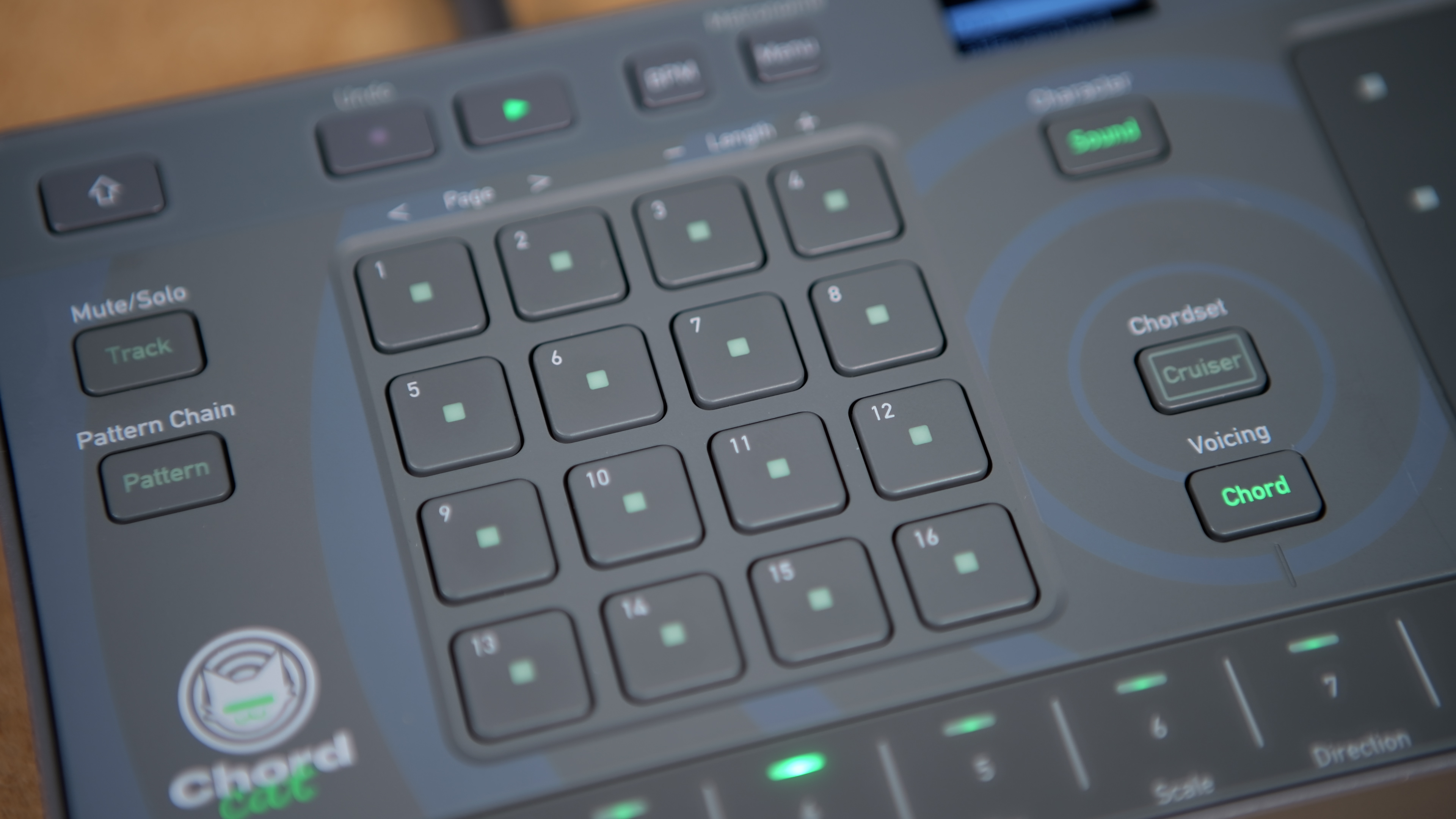
On the negative front, Chordcat’s interface feels cheap and certain elements are fairly unpleasant in use. The XY pad is the main offender here. It’s a good idea in principle, but in reality the pad is more like a grid of 16 buttons covered by a sheet of plastic, resulting in a very stepped response when adjusting sound parameters. It’s not the smooth, continuous control you’d expect from this form of interface.
If you can get past the feel of some elements though, Chordcat packs a lot of hands-on functionality into its small frame. It also lands at an affordable price point that is likely to mean that many users are happier to overlook some of its less refined elements.
Sequencing
The headline feature of Chordcat is its Chord Cruiser mode. This is designed to automatically suggest combinations of chords. It’s fairly simple to use in operation – the user selects an initial starting chord using the key/scale functions, and then the 16 buttons of the XY pad light up to present a varying number of compatible chords that could work next in a sequence.
These chords can be auditioned using the XY pad buttons. The user can then select their favourites to assign to the buttons along the bottom edge of the UI. Once assigned these chords can be quickly triggered and sequenced with a single button press.
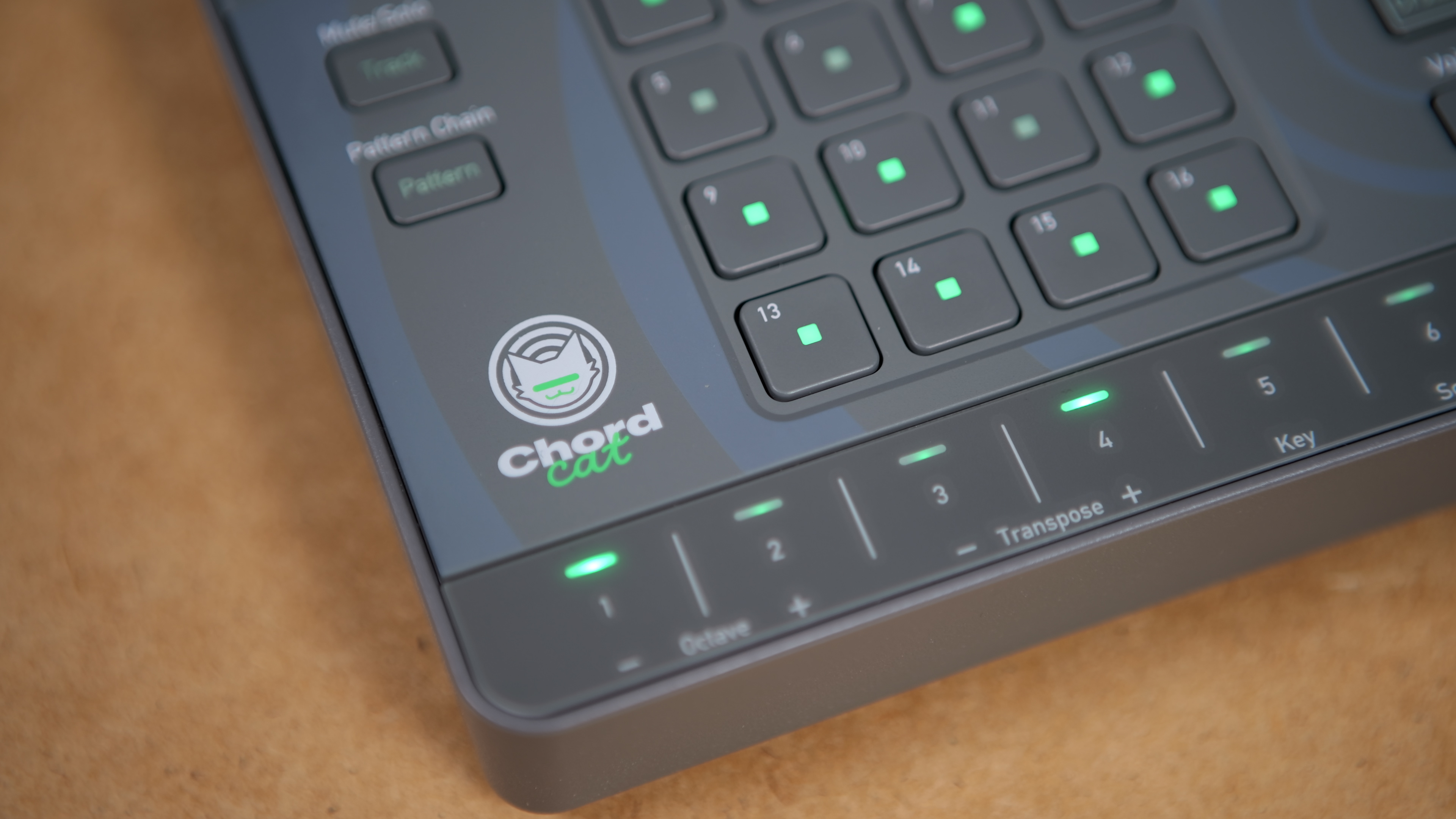
It’s an interesting idea and generally well implemented. Particularly for those lacking deep music theory knowledge, it provides a simple, quick way to discover chord progressions that the user might not have created otherwise.
There is also a selection of pre-defined chord sets, which are separate from the Chord Cruiser mode. The inclusion of these chord banks alongside the automatic Cruiser mode is arguably a little confusing from a workflow perspective – it’s unclear if, or how, these two features are supposed to interact – although I won’t bemoan the extra functionality.
Chordcat’s other interesting sequencing feature is the Running Direction function inherited from the Toraiz Squid. This can be used to alter the direction in which a sequence moves around the grid of 16 steps, with right, down, clockwise and counterclockwise options, along with the option to reverse sequences and have patterns bounce back and forth. This is a really fun feature, and a great way to quickly turn a pattern on its head or alter the way that Chordcat’s eight tracks are interacting.
Sounds
For my money, Chordcat’s weakest element is its sound engine. Although there’s a broad range of sounds on offer, including banks of synth tones, pianos, keyboards, basses and multiple drum kits, the selection within these categories is a little vanilla and there’s little in the way of editing capabilities.
Each sound can have its low pass filter and amp envelope controlled via the XY pad, but there’s not much depth here. The filter has just controls for cutoff frequency and resonance, and the envelope has just attack and release. What’s more, in the case of drum kits, these parameters are shared across every sound in the kit – ie, if you want to shorten the release time on a hat, it will apply to your kick as well.
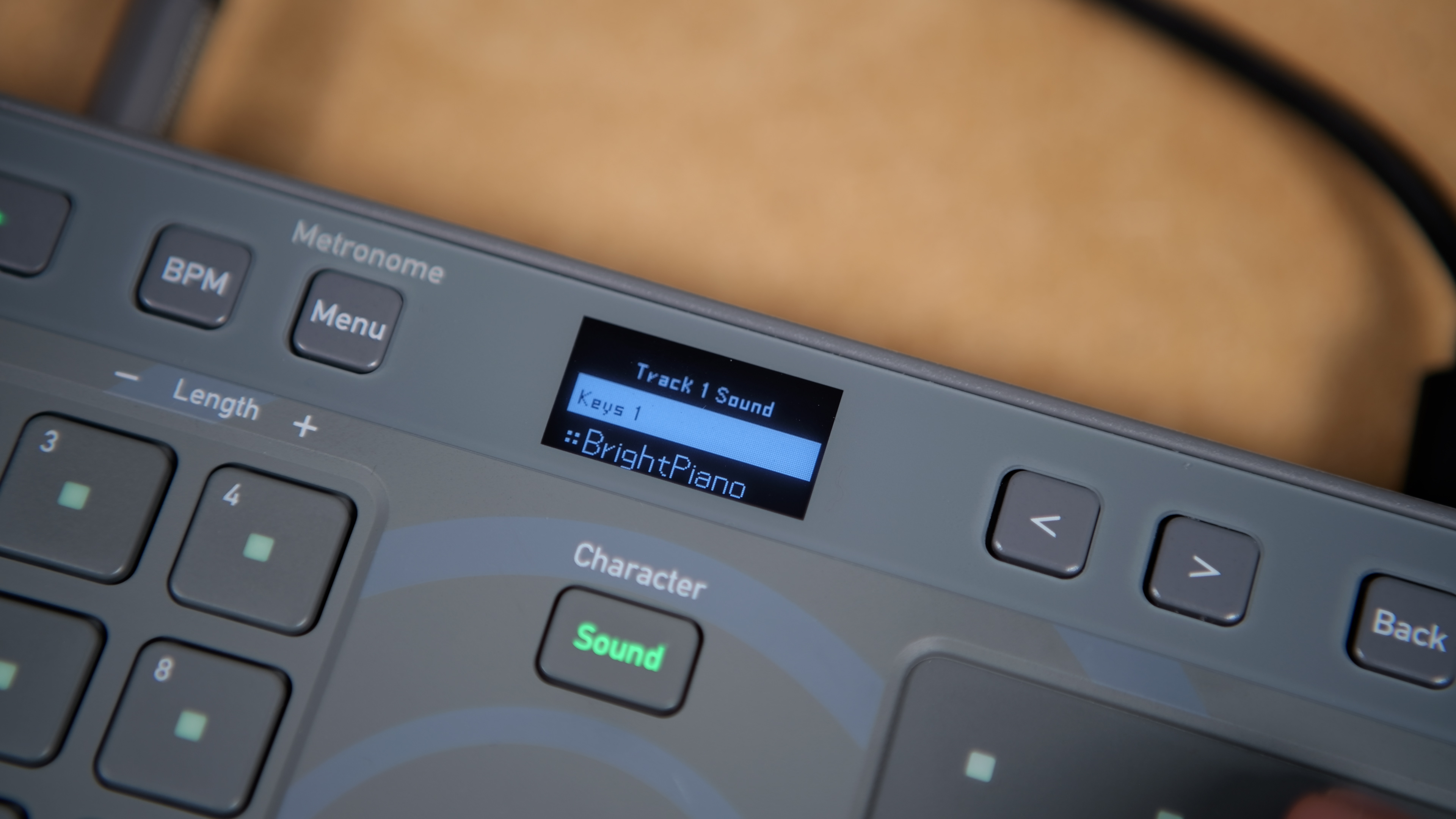
There are a few effects to add a little character. Chordcat features an arpeggiator, delay and ducker, each of which can be controlled via the XY pad. Kits can have reverb applied via a send too, as well as have their individual levels and pan position adjusted.
It’s not that any of this is outright bad, but it all feels a little lacking in character and sound shaping potential compared to other devices you’ll find at this price point, such as Novation’s excellent Circuit.
First impressions
Given these misgivings about the sound, it would be easy to write off Chordcat. Certainly, as an entirely self-contained unit, I feel its middling sounds let it down.
It is, however, possible to ignore these sounds and focus on the genuinely interesting sequencing ideas. The Chord Cruiser mode is a lot of fun and genuinely inspiring, as is the Running Direction capability. Fortunately Chordcat has both USB and MIDI connectivity, meaning you can quite easily hook it up to one or more devices that make sounds more inspiring than Chordcat’s own, in order to enjoy the best of both worlds.
AlphaTheta has also released a Chordcat Manager application that promises to make it easy to export and import sequences from the device via USB. This is one of the elements I wasn’t able to try when I previewed the device, which is a shame, as I can see it potentially broadening its appeal as a sketchpad for patterns and chord progressions.
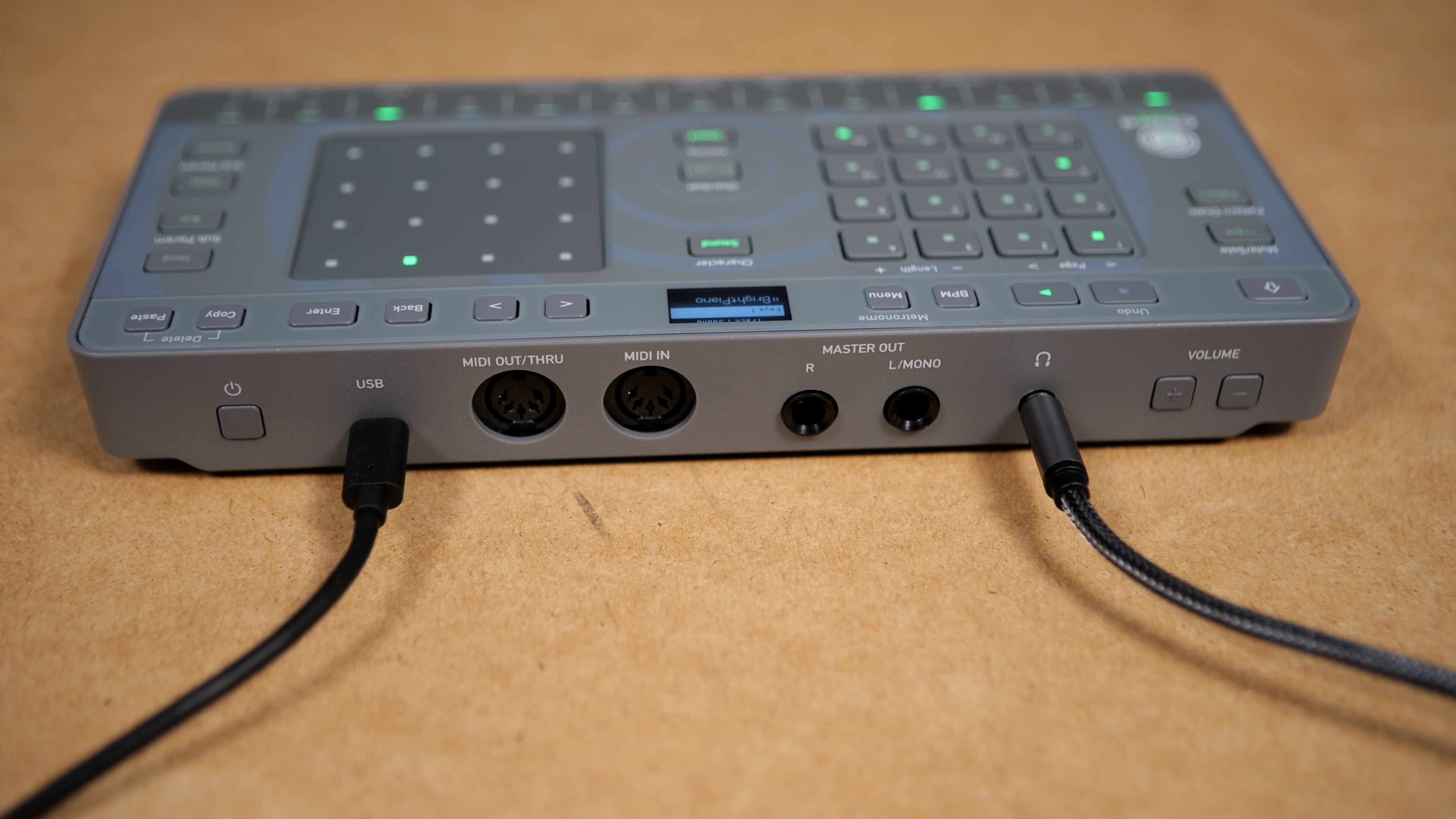
While I'm dubious about warming to Chordcat as a groovebox in itself, I can certainly see the potential appeal of it as an on-the-go device to sketch progressions, riffs and patterns, which can then be applied to external hardware synths or in-the-box sounds. The manager application certainly has potential for enhancing these capabilities too.
In short, Chordcat features some genuinely fresh and inspiring sequencing ideas, paired with an underwhelming sound engine. Fortunately though, that latter element can potentially be ignored or tolerated in favour of its stronger aspects. Whether the innovative side of Chordcat is appealing enough to warrant its price – and let it compete with other similarly priced sketchpad tools like Circuit or Ableton Move – remains to be seen. We’ll bring you a full review in due course.
Chordcat is out now priced at €279/$279/£239. Head to the AlphaTheta site for more.
I'm the Managing Editor of Music Technology at MusicRadar and former Editor-in-Chief of Future Music, Computer Music and Electronic Musician. I've been messing around with music tech in various forms for over two decades. I've also spent the last 10 years forgetting how to play guitar. Find me in the chillout room at raves complaining that it's past my bedtime.
You must confirm your public display name before commenting
Please logout and then login again, you will then be prompted to enter your display name.
